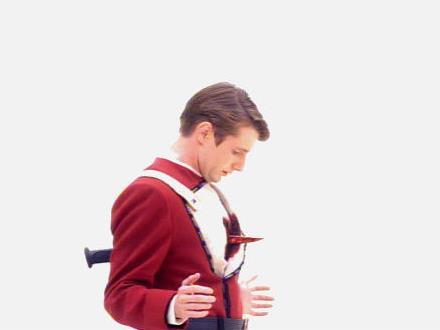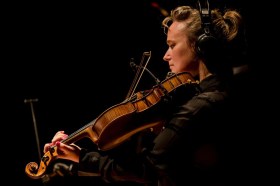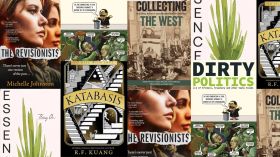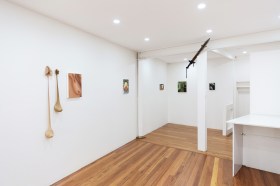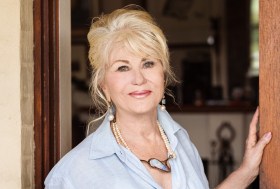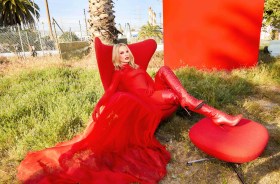This week’s Federal Budget leaves overall arts funding intact but decimates the Australia Council. The Australia Council has lost $104.8 million over four years to a newly created fund called the National Programme for Excellence in the Arts (NPEA).
There is no question that this decision constitutes an attack on the Australia Council. In his announcement of the NPEA Minister for the Arts Senator Brandis said, ‘Arts funding has until now been limited almost exclusively to projects favoured by the Australia Council. The National Programme for Excellence in the Arts will make funding available to a wider range of arts companies and arts practitioners, while at the same time respecting the preferences and tastes of Australia’s audiences.’
It needs little translation to make it clear that the Minister is unhappy with the Australia Council’s decisions, that he considers the Council out of step with audiences and that he wants to wrest at least a portion of control from the Council and position it within the Ministry.
While the Australia Council remains in control of the vast majority of arts funding – $185 million – the almost $27 million that will be under the control of the Ministry represents a significant chunk.
The Minister has also made it clear that it is the small to medium independent players who will feel the brunt of this change. There will be no reduction to Australia Council’s funding to the 28 major performing arts organisations.
Given the majors take more than half of the Australia Council’s allocations each year, the missing $27 million will come out of the remaining allocations, roughly $106 million last year.
In practice the Australia Council has lost a quarter of the money it uses to fund independent artists and arts organisations.
That money has not disappeared from the sector but it has been channelled into a body without the checks and balances of the Australia Council.
The key issues that will differentiate the NPEA and the Australia Council are independence and peer review. The core principles behind the establishment of the Australia Council were – and remain – its arms-length relationship with the government of the day and its devolution of the power of decision-making to arts peers, who are charged to make independent artistic judgements.
The NPEA will be situated in the Ministry and it is unlikely to have either political independence or peer review. ArtsHub asked the Minister’s office to confirm whether there would be peer review but was told only that the program will ‘be run in accordance with the Commonwealth Grant Guidelines and in a transparent manner with applications accepted for a wide range of arts projects’.
Though the Australia Council has recently put considerable effort into expanding and improving the peer review process, peer review is not an unassailable principle and this may be potentially good news for artists who have had a negative experience of the peer review process.
But – like democracy – peer review is an imperfect system that nevertheless offers more protections than any known alternative. Without it, the choice of grant recipients will depend on the tastes and preferences of the Minister – or as Professor Peter Tregear phrased it on RN this week ‘on the whims of the Minister’.
While Tregear noted such an engaged Minister is no bad thing, he made the key point that the new program – so far – lacks any accountability. ‘The point is we need to know. Those whims need to be, like all good government policy, rational, accountable and above all reviewable.’
The NPEA is not ‘Australia Council 2’. It is not an organisation but simply a funding channel which allows the Minister to bypass the Council and spend arts money where he wishes.
Additional information provided to ArtsHub identifies three priorities.The first is government investment to leverage private sector support, a priority that is well-established and has been emphasised by an additional $5.2 million taken from the Australia Council and given to Creative Partnerships Australia.
The second is international touring – an area that is already a clear part of the Australia Council remit so is clearly about the Ministry exerting some control over who gets to tour, ensuring the Government has some more influence on the image Australia projects to the world.
The third is a catch all: ‘Funding for strategic projects will support a wide range of arts activities, tours and performances providing access to high quality arts and culture for audiences in our cities and regions.’
In other words, whatever we like.
What Minister Brandis likes is clearly on the record. He has a strong commitment to major performing arts companies which cater for what he calls ‘the great audiences’ and a deep interest in heritage arts including opera, ballet and classical music.
Amidst the savage cuts in last year’s budget the Australian Ballet School scored an extra $1 million for a residence. The Minister admitted close interest in the project.
The controversial allocation of $275,000 to the classical music label Melba without peer review or a competitive process is starting to sound like a prelude to the NPEA. Establishing the program allows the Minister a legitimate pathway for such specific allocations – particularly if there is not a transparent competitive grant application process.
In a budget night statement, the Minister said, ‘The purpose of the National Programme for Excellence in the Arts is to expand funding to artists and arts organisations who presently are unable to secure funding through the Australia Council. As a result of this program, more Australian arts practitioners and organisations will be able to pursue their creative endeavours.’
So the work that the Australia Council has been funding to date – worked judged by artistic peers to be of the highest standard but sometimes experimental – is off the agenda for the NPEA.
Instead the Minister will be looking for work with strong commercial value, international potential and traditional aesthetics.
The small-to-medium sector has been a bête noire for Senator Brandis. He sees it as unaccountable and overfunded. But the sector is essential development crucible for artistic creativity. Many in the sector believe Senator Brandis does not understand the essential role individual artists and smaller arts organisations play in the ecology of the sector.
But there is a possibility he understands it only too well. Independent arts are in any society the place where political and social dissent is most challengingly expressed.
Senator Brandis is clearly unhappy with subsidising dissent. His letter to the Australia Council warning it off funding the Biennale of Sydney after the Biennale withdrew from Transfield sponsorship has left the sector wary of political interference. Some suggested this week that the establishment of the NPEA was payback for the statement artists made when they withdrew from the Biennale to protest asylum seeker policy.
In Opposition the Minister was – as politicians tend to be – vocal in support of independent arts funding, even moving an amendment to the Australia Council Bill in 2013 to uphold Freedom of Expression.
‘The arts should never be the captive of the political agenda of the day: the freedom of the artist to develop his or her creativity wherever it may take them must always be protected and defended,’ he said when in electioneering mode.
Holding the purse strings is the most powerful way to counter freedom of expression. The Minister’s decision to take some of those strings from the independent Australia Council and put them in his own pocket will make it harder for artists to say what he doesn’t want to hear.

